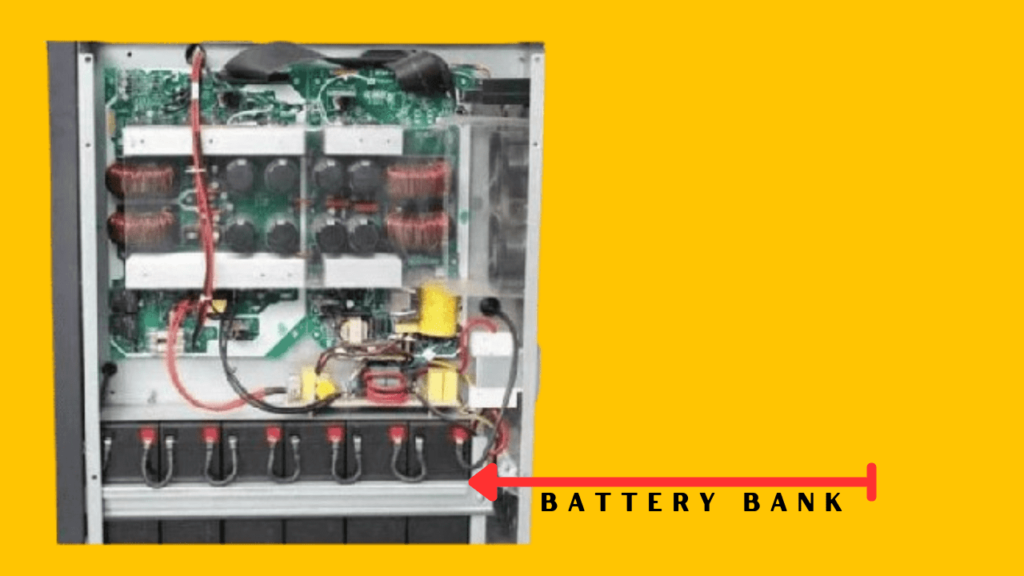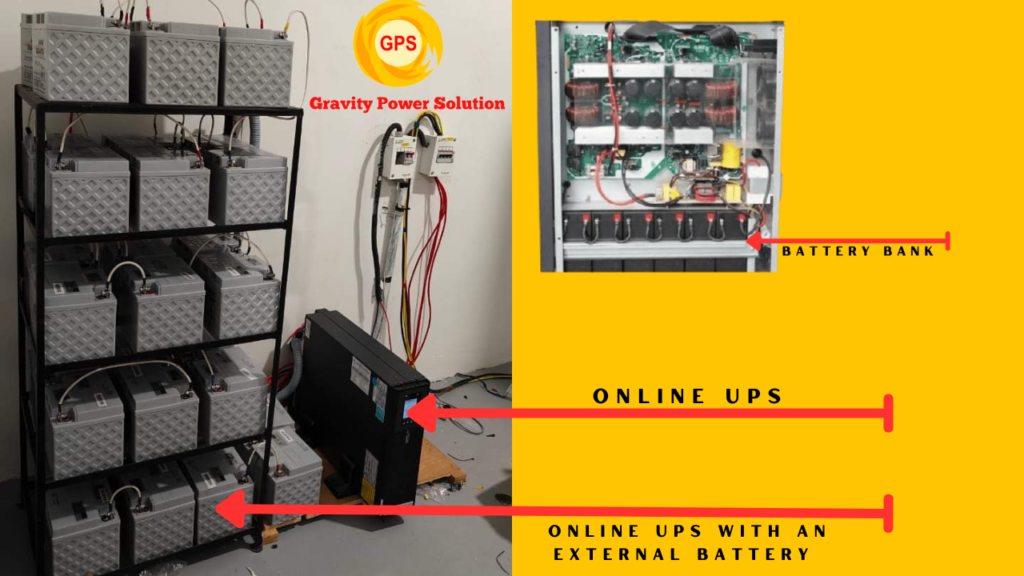Understanding the Difference Between Online UPS with Inbuilt Battery and External Battery
In the realm of uninterruptible power supply (UPS) systems, choosing the right type can significantly impact the efficiency and reliability of your power solutions. At Gravity Power Solution, we aim to provide clarity on the critical differences between Online UPS systems with inbuilt batteries and those with external batteries. Understanding these distinctions will help you make informed decisions tailored to your specific power needs.
What is an Online UPS?
Online UPS, also known as a double-conversion UPS, continuously provides power to connected devices by converting incoming AC power to DC and then back to AC. This ensures a seamless supply of power without any interruptions, making it ideal for sensitive and critical equipment.
Online UPS with Inbuilt Battery
Definition
Online UPS with an inbuilt battery has the battery housed within the UPS unit itself. This compact design integrates all components into a single unit, simplifying installation and maintenance.
Advantages
- Space-Saving: The compact nature of an inbuilt battery UPS makes it ideal for environments with limited space.
- Ease of Installation: Installation is straightforward and hassle-free with everything housed in one unit.
- Portability: These systems are generally easier to move and install in different locations as needed.
Disadvantages
- Limited Capacity: Inbuilt battery systems typically have a lower capacity due to space constraints, making them less suitable for high-power requirements.
- Heat Management: The compact design can lead to higher heat generation, potentially affecting the lifespan of the UPS and battery.


Online UPS with External Battery
Online UPS with an external battery separates the battery from the main UPS unit. The battery bank is housed in a separate enclosure, connected to the UPS.
Advantages
- Scalability: External battery setups allow for greater scalability, enabling you to add more batteries to increase capacity as needed.
- Enhanced Performance: With more space for cooling and ventilation, external battery systems often have better heat management, enhancing overall performance and longevity.
- Longer Backup Time: External batteries typically offer longer backup times, suitable for environments with frequent or prolonged power outages.
Disadvantages
- Space Requirements: These systems require more physical space, which may be limited in smaller environments.
- Complex Installation: Setting up an external battery system can be more complicated and may require professional installation.
Key Considerations for Choosing Between Inbuilt and External Battery UPS
When deciding between an Online UPS with an inbuilt battery and one with an external battery, consider the following factors:
- Power Requirements: Assess your power needs and choose a system that can handle your load. For higher capacities, an external battery system may be more suitable.
- Space Availability: Evaluate the physical space available for your UPS system. Compact environments might benefit from an inbuilt battery design.
- Budget: Consider your budget constraints. Inbuilt battery systems may have lower initial costs but can be limited in capacity.
- Maintenance: Determine the level of maintenance you can manage. Inbuilt systems are generally easier to maintain, while external battery systems may require more frequent checks and maintenance.
Conclusion
Both Online UPS systems with inbuilt batteries and external batteries have their unique advantages and drawbacks. At Gravity Power Solution, we offer a range of UPS systems tailored to meet diverse needs and preferences. By understanding your specific requirements and the differences between these UPS types, you can make an informed decision that ensures the reliability and efficiency of your power solutions.
